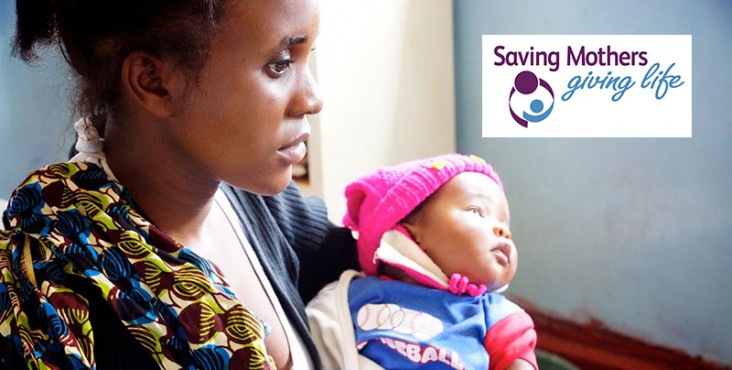- What We Do
- Agriculture and Food Security
- Democracy, Human Rights and Governance
- Economic Growth and Trade
- Education
- Ending Extreme Poverty
- Environment and Global Climate Change
- Gender Equality and Women's Empowerment
- Global Health
- Water and Sanitation
- Working in Crises and Conflict
- U.S. Global Development Lab

A newborn whose mother dies during or immediately following childbirth is 10 times more likely to die than a newborn whose mother survives. As part of the U.S. Agency for International Development's (USAID's) effort to end preventable child and maternal deaths, the Saving Mothers, Giving Life (SMGL) partnership employs a health systems approach to ensure that pregnant women have access to clean, safe childbirth services and timely emergency care. Launched in 2012 by then-Secretary of State Hillary Clinton, the partnership brings together national governments, non-governmental organizations, the private sector, and professional associations to reduce maternal and newborn mortality.
The strategic objective of the SMGL partnership is to accelerate reductions in maternal and newborn mortality in target districts in Uganda, Zambia, and Nigeria by increasing demand for services, facilitating access to lifesaving care, and strengthening health systems at the district level.
SMGL focuses on the three primary delays that contribute to maternal and neonatal mortality:
- Delay in seeking care. Local community members help elevate the importance of and generate demand for facility-based maternal and newborn health services among women, their male partners, and their family members.
- Delay in reaching care. Local community members help ensure that women reach facility-based services in a safe and timely manner.
- Delay in receiving care. Local facilities are equipped and staffed with trained service providers, and health care providers are incentivized to practice in rural areas.
In its Mid-Initiative Report, SMGL reported a 53 percent reduction in maternal mortality in target facilities in Zambia and a 45 percent reduction in Uganda. The rate of deliveries occurring in a facility in target districts in Uganda has increased by 30 percent, and in Zambia the number of women receiving treatment to prevent the spread of HIV and AIDS to their babies has increased by 81 percent.
SMGL is a $280,000, 5-year public-private partnership extending from 2012 to 2017. Key partners include the governments of Nigeria, Uganda, Zambia, Norway, and the United States; Merck for Mothers; Every Mother Counts; Project C.U.R.E.; and the American College of Obstetricians and Gynecologists.
To learn more about the Saving Mothers, Giving Life partnership, visit the website.







Comment
Make a general inquiry or suggest an improvement.